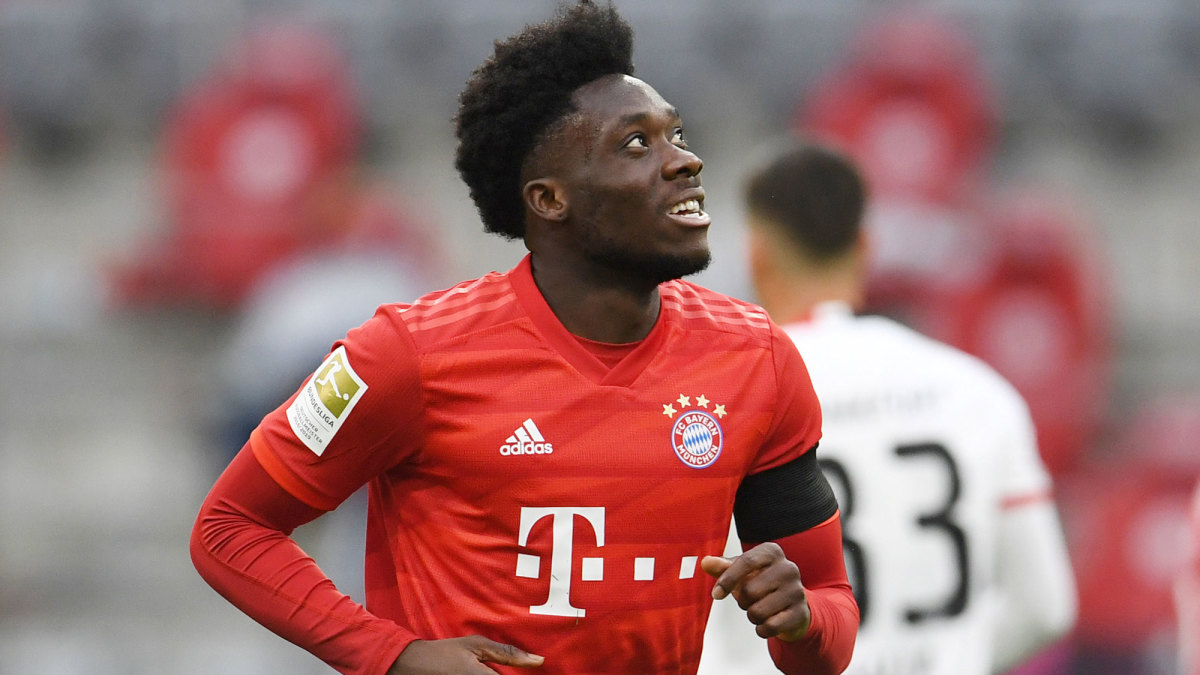Alphonso Davies's Rapid Rise and the Future of the Left Back Position
Twice in the opening 10 minutes of Tuesday's table-topping showdown in the Bundesliga, Borussia Dortmund slipped passes into space down the right. Twice Thorgan Hazard looked to be in a dangerous position. Twice there was an anticipation of a cross for Erling Braut Haaland. And twice there was a blur of Bayern Munich red, and it turned out there wasn’t space after all.
Presumably there will come a time when Alphonso Davies’s pace ceases to feel spectacular, but we’re not there yet. It’s impossible to see him, even in the company of other quick, elite-level sportsmen, and not be struck by just how fast he is.
Pace alone, of course, isn’t enough, as Usain Bolt found in his aborted stint with Central Coast Mariners in Australia. But it does help, and particularly at fullback. Davies’s sudden rise to prominence is the story of the continuing development of the position.

The name itself feels awkward now and is explicable only through its history. When the Football Association drew up its laws in 1863, teams tended to play with one man fully back, two halfbacks, and seven forwards (plus a goalkeeper, although even that role took a little time to be formalized). Six decades later, although the default formation had shifted to 2-3-5, the conception was the same: fullback, halfbacks, forwards.
After the 1925 change in the offside law, a third player dropped into the back line (still confusingly called the center-half), flanked by fullbacks. By the late 50s, another halfback had retreated to form a back four, and the fullbacks had become the players who operated on the outsides of that, a change of role that both enabled them better to combat opposing wingers and, spasmodically, to get forward. For the first time, great attacking fullbacks began to emerge: Nilton Santos, Silvio Marzolini, Giacinto Facchetti.
A process was set in motion that has only accelerated since the 90s, when Jack Charlton made his observation that the fullback was tactically the most important player on the field, because he is the one who most often has room in front of him. The fullback has become a vital attacking position, for clubs like Bayern, arguably more attacking than defensive.
Increasingly, matches come to seem like games of chicken, battles of whether the fullbacks or wingers can impose themselves (which to an extent, of course, is contingent on the struggle in the center and who is able to control the ball). The hope for Dortmund on Tuesday was that their 3-4-2-1 would expose Davies, as the right-sided creator, first Hazard and then Jadon Sancho, linked with right wingback Achraf Hakimi. But it didn’t. Davies had the measure of them.
That is to a large extent down to discipline and reading of the game–and that is something that seems almost inherent: Carl Robinson, the Canadian teenager's coach at MLS's Vancouver Whitecaps, observed in an interview with Sky that, "He did things naturally, without me needing to teach him anything. It was one of the fresh things about him."

But pace helps. Any fullback who pushes forward risks being caught out by balls played in behind them. The structure should cover that–see, for instance, how often Gerard Pique would sweep up behind Dani Alves for Barcelona. That is a skill that should come readily to David Alaba, given his experience of the fullback position. But Davies has the huge advantage of being able to get back himself.
There are those who worry about his one-on-one defending, and perhaps they have a point. But the truth is when his recovery speed is as good as that, it doesn’t really matter. Besides, this is a relatively new position to Davies, one he fully adopted only because of the injuries to Niklas Sule and Lucas Hernandez. He is learning with each passing game, and that same natural game intelligence that impressed Robinson so much means he should be able to continue learning the role rapidly.
Alphonso Davies speed rating: 💯 #DerKlassiker
— SI Soccer (@si_soccer) May 26, 2020
(via @FoxSoccer) pic.twitter.com/0UgexaXUKR
“Alphonso is young, and, in recent games he's really matured a great deal," Hansi Flick said after Tuesday’s win, which all but wrapped up Bayern's eighth straight Bundesliga title. "He's quick, with extraordinary speed–as you could see today when he was faced with Hakimi or Sancho, who are not particularly easy opponents, yet he had both of them under control.
"He charged forwards a lot but what impresses me the most about him is how he throws his weight about in challenges. He defended his side of the field completely, and I'm really happy with him. I think he could maybe give us a bit more going forward, but that's all part of his development."
At just 19, Davies still has a lot of time for that development. Already, though, 30 Bundesliga games into his career, he looks like the future of the left back position.
